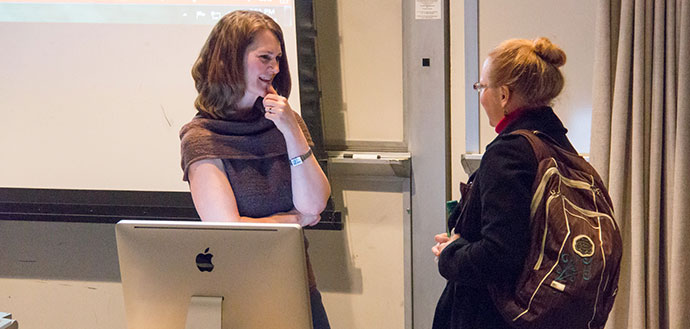New to Oregon State, Nutrition and Dietetics Clinical Assistant Professor Neilann Horner is no stranger to higher education – she has held numerous positions within the dietetics field for more than 20 years. Most recently, she’s served as a visiting assistant professor of community health at Western Oregon University, a media representative for the Oregon Academy of Nutrition and Dietetics and a volunteer director at the Nonprofit Hershey Free Food Bank. She earned an MPH from the University of Illinois in Springfield, Illinois, a PhD in Nutritional Sciences at the School of Public Health and Community Medicine at the University of Washington, Seattle, and completed her postdoctoral research at Fred Hutchinson Cancer Research Center, Public Health Sciences in Seattle, Wash.
What made you decide to get into this field? Is there one specific moment that inspired your career path?
“I’ve been a registered dietitian for 24 years. Pathophysiology and disease prevention have always been strong interests for me, but the real appeal was the sensibility of modulating what we eat to positively impact health.”
Why did you choose to work at Oregon State?
“I’ve worked in a number of different industries and did not pursue a career in higher education initially out of my post-doctoral training. I came to Oregon State because I wanted to be part of the decision making associated with implementing the increase in the minimum education required to become a registered dietitian, a charge recently issued by the Academy of Nutrition and Dietetics.”
What is your favorite part about teaching/researching nutrition?
“I really enjoy introducing the interesting facts and history about nutrients to students for the first time. We get into some great conversations as everyone comes in having been shaped by nutrition messages in our popular culture. Hopefully they leave with a more critical eye and understanding of how metabolism works.”
What do you believe is your greatest accomplishment in the field?
“Working clinically feels a little bit like throwing one starfish back in the ocean at a time, but each person served expands my thinking a little bit. I did large-scale population studies at Fred Hutchinson Cancer Research Center but really felt most effective in communication roles between disciplines that were struggling to understand each other such as basic scientists and primary care physicians.”
How are you going to change people’s lives with your work?
“There’s a lot of work to be done and we need an army of competent problem-solvers to communicate the value of prevention to our current healthcare system administrators. I’m aiming to help equip those leaders.”

What is the best advice you ever received, and who gave it?
“If the grass is always greener on the other side of the fence, you can be sure it rains a lot over there. A close friend reminds me of this on occasion.”
What advice would you like to give to students and young alums?
“Nothing is too big or too difficult if you just take it one step at a time and give the issue the thoughtful attention it deserves.”
What is one surprising thing about you that not many people know?
“I graduated from a public high school with eight in my senior class. I had physics alone. During my years at home with a child, I took up cello and am working my way toward about a 6th grade level of competence (relying heavily on my own advice to students!)”
What are your favorite activities to do outside of work?
“I like to travel, hike, jog, play cello or piano, make photo books and look into ancestral history.”

